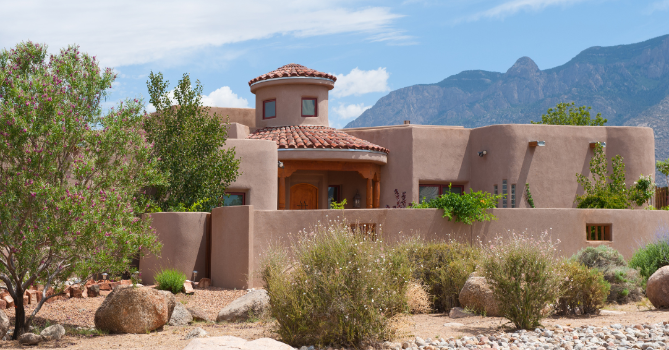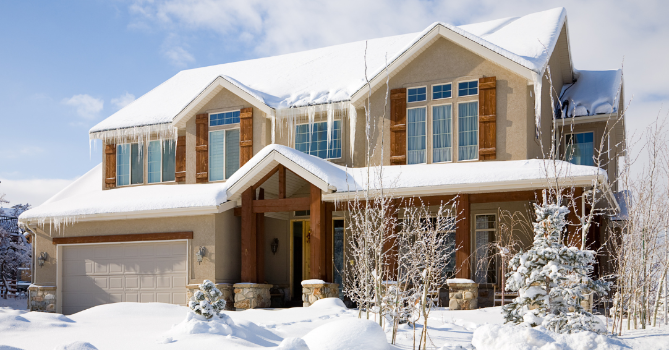
Sustainable Solutions for Extreme Environments
Hey there, welcome aboard! Today, we're diving into an exciting topic: "Building for Tomorrow: Integration of Sustainability in Extreme Environment Architecture."
Picture this: extreme environments, like scorching deserts or freezing mountaintops, present unique challenges for architects. But fear not! We're here to explore how sustainability can save the day.
Sustainability isn't just a buzzword; it's a game-changer. By incorporating eco-friendly practices into architecture, we can protect our planet and create buildings that stand the test of time.
So, why does this matter? Well, imagine a world where every building is a beacon of sustainability, where energy is conserved, and nature is respected. That's the future we're building towards.
In this blog, we'll unpack the importance of sustainability in extreme environments, share some nifty tips, and explore exciting innovations shaping the future of architecture.
Ready to embark on this sustainability journey with us? Let's dive in!
Extreme Environment Architecture is all about tackling the toughest challenges nature throws at us. Think of places like blistering deserts or icy tundras – these places need buildings that can brave the elements.
But what makes extreme environments so... extreme? It's the harsh conditions, like extreme temperatures, high winds, and sparse resources, that make designing for these areas a real puzzle.
Imagine trying to keep a building cozy when it's -40°C outside, or preventing it from overheating when the sun's blazing down at 120°F. That's where extreme environment architecture comes in.
Architects who specialize in this field have to get creative. They use clever design tricks and innovative materials to create buildings that can withstand Mother Nature's toughest tests.
It's not just about survival, though. By understanding extreme environment architecture, we can design buildings that are not only resilient but also respectful of their surroundings.
So, whether it's a research station in Antarctica or a desert retreat, extreme environment architecture is all about finding harmony between humans and nature in the most challenging places on Earth.

Why does sustainability matter in extreme environment architecture? Let's break it down.
First off, extreme environments are fragile ecosystems. They're sensitive to human activity, and any disruption can have serious consequences. That's where sustainability comes in. By designing buildings that minimize our environmental footprint, we can help preserve these delicate ecosystems for future generations.
But it's not just about protecting the environment; it's also about creating buildings that can stand the test of time. Extreme environments are, well, extreme. They put buildings through their paces, with intense heat, freezing cold, and everything in between. Sustainable design ensures that these buildings are not only durable but also efficient, using resources wisely and minimizing waste.
Plus, sustainability makes financial sense. By reducing energy consumption and maximizing efficiency, sustainable buildings save money in the long run. That's music to any architect's ears!
But perhaps most importantly, sustainability is about future-proofing our planet. As climate change accelerates, extreme environments are becoming even more challenging to inhabit. By embracing sustainable practices now, we can ensure that our buildings are ready for whatever the future holds.
In short, sustainability isn't just a buzzword – it's a necessity. And in extreme environments, it's more important than ever.
Now that we understand why sustainability is crucial in extreme environment architecture, let's talk about how we can put it into action.
First things first: passive design. This means designing buildings that work with nature, not against it. Think strategically placed windows to maximize natural light and ventilation systems that harness the power of the wind. By using these passive strategies, we can reduce the need for artificial heating and cooling, saving energy and money in the process.
Next up, materials matter. Choosing sustainable materials – like recycled steel, bamboo, or locally sourced timber – can significantly reduce a building's environmental footprint. These materials are not only eco-friendly but also often more durable and resilient, perfect for withstanding the harsh conditions of extreme environments.
But sustainable design isn't just about what materials we use; it's also about how we use them. Modular construction, for example, minimizes waste and speeds up construction time, making it a win-win for both builders and the environment.
And let's not forget about energy efficiency. From solar panels to geothermal heating, there are plenty of innovative technologies available to help reduce a building's energy consumption. These solutions not only lower utility bills but also lessen our reliance on fossil fuels, helping to combat climate change in the process.
But perhaps the most important aspect of integrating sustainable practices is mindset. It's about thinking holistically and considering the long-term impact of every design decision. By prioritizing sustainability from the get-go, architects can create buildings that not only survive but thrive in extreme environments, ensuring a brighter, greener future for us all.
Local materials play a pivotal role in extreme environment architecture, and here's why.
First off, they're abundant. Using materials sourced from the surrounding area reduces the need for long-distance transportation, cutting down on carbon emissions and lowering costs.

But it's not just about convenience – local materials also connect buildings to their surroundings. Whether it's adobe in the desert or stone in the mountains, using materials native to the area creates a sense of place and honors local traditions.
Plus, local materials are often more resilient. They're adapted to the local climate and conditions, making them better suited to withstand the harsh realities of extreme environments. From insulating properties to structural integrity, these materials have stood the test of time.
And let's not forget about the economic benefits. By supporting local industries and artisans, architects can empower communities and promote sustainable development.
So, whether it's mud bricks in the desert or volcanic rock in the Arctic, local materials are the backbone of sustainable architecture in extreme environments. They're not just building blocks – they're a testament to the power of working with, not against, the natural world.
What does the future hold for extreme environment architecture? Let's take a peek.
One exciting trend is the rise of modular construction. By assembling buildings off-site and then transporting them to their final destination, architects can streamline the construction process, reduce waste, and minimize environmental impact. It's like building with giant Lego blocks – quick, efficient, and eco-friendly.
But that's just the beginning. 3D printing is also revolutionizing the way we build. From houses to furniture, architects are using cutting-edge technology to create intricate structures with minimal waste. Imagine printing a building layer by layer, using sustainable materials and precise designs to create customized spaces that are as beautiful as they are functional.
And let's not forget about advanced building materials. From self-healing concrete to biodegradable plastics, researchers are constantly developing new materials that are stronger, lighter, and more sustainable than ever before. These materials not only improve the durability and efficiency of buildings but also push the boundaries of what's possible in extreme environments.
In short, the future of extreme environment architecture is bright – and sustainable. By embracing modular construction, 3D printing, and advanced materials, architects can create buildings that not only survive but thrive in even the harshest conditions. So buckle up, because the future of architecture is here, and it's looking greener than ever.
And there you have it – the journey through the integration of sustainability in extreme environment architecture.
From understanding the unique challenges of extreme environments to exploring innovative solutions and future trends, we've covered a lot of ground.
But the journey doesn't end here. As architects, builders, and citizens of this planet, it's up to us to continue pushing the boundaries of what's possible. By embracing sustainable practices, utilizing local materials, and staying ahead of future trends, we can create buildings that not only withstand the test of time but also protect our planet for generations to come.
So let's roll up our sleeves and get to work. Together, we can build a future where architecture and sustainability go hand in hand, creating spaces that are not only beautiful and functional but also kind to the planet we call home.